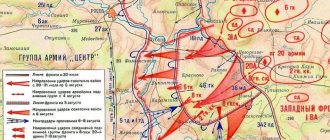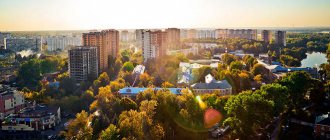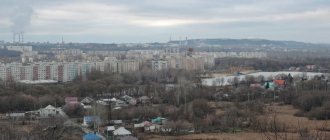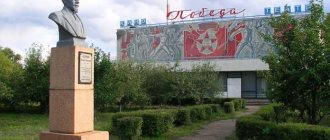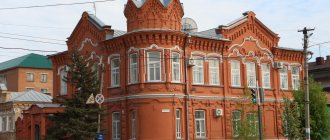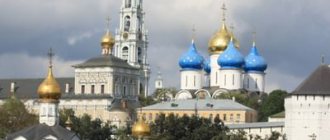As the recent census showed, population growth within the Moscow Ring Road has fallen to its lowest levels in many years. The city is losing its rubber elasticity.
The density in some areas exceeds 25 thousand people per square meter. km, as in Mumbai and Hong Kong. But unlike these Asian cities, the Russian capital has a gigantic prominence, in the direction of which it can grow for a long time, absorbing the inhabitants of the rest of the country - New Moscow. It accounts for the lion's share of population growth.
In 2012, less than 250 thousand people lived in the territory annexed to the capital. By 2020 - already 554 thousand. In accordance with the General Plan, by 2035 there will be more than 1.6 million people in New Moscow. It’s easy to imagine what this might look like, looking at the monotonous high-rise buildings in Salaryevo and Kommunarka. The development vector there is not the most progressive: population growth is outpacing the development of social infrastructure. The risks of ghettoization are increasing. Governments and businesses are responding by offering solutions to social problems. But these decisions often only take the logic of the “Asian model” of urbanization with its “Shanghai” human settlements and total dehumanization of the environment to the limit.
How this happens can be seen firsthand in the example of the largest municipal formation of New Moscow - Troitsk.
City in the forest
The picturesque corner on the banks of the Desna began to turn into a city after the war. The dachas and holiday homes of the Writers' Union were located here. Alexander Tvardovsky, Vladimir Vysotsky, Yuri Nagibin, Lyudmila Zykina lived in the DSK “Soviet Writer”. And even Alexander Solzhenitsyn. In the 1950-60s, the Soviet government built large research complexes here: the Institute of Terrestrial Magnetism, the Institute of High Pressure Physics, the Troitsk Institute of Innovation and Thermonuclear Research, etc. Like many other science cities, Troitsk was built as a “city in the forest” " The buildings of scientific institutes and residential buildings are literally located in the park area, and the huge Trinity Forest stretches along the entire western border of the development.
“The forest is a real anchor for the residents of Troitsk. We can say that local identity begins with it,” says city resident and journalist Alexander Litoy. The experience of other science cities from Novosibirsk Akademgorodok to Zhukovsky near Moscow shows that the descendants of Soviet scientists are ready to defend their forest identity. Any attack on perennial pine trees around residential neighborhoods in these cities caused serious mass protests.
Over the past 20 years, the population of Troitsk has doubled. Moreover, the rate of this growth has increased sharply since the city was included in New Moscow. In 2002, the city had only 32.6 thousand residents, in 2012 - 42.2 thousand, and in 2022 - already 62.2 thousand. The development of social infrastructure did not keep pace with population growth. The shortage of places in schools increased every year, which became one of the main city problems.
In the report of the head of the city for 2011–2016, a figure was named: the design capacity of six city schools (united in three educational complexes) is only 4035 students. It was exceeded 10 years ago, when there were 5,090 schoolchildren in Troitsk. Since then, their number has grown by 2.5-6% per year, and there have been no more places in the classes. In 2022, the actual number of students exceeded the design capacity of schools by 2,718 people, i.e. by 67%.
Troitsk
Some grandmothers, native Muscovites, believe that only those who were born within the Garden Ring are worthy of the proud title of Muscovite. Times are changing, and now the borders of Moscow extend to the Kaluga region. Our generation is not yet ready to consider the village 100 km from the Moscow Ring Road as part of the capital and shyly calls the annexed territories New Moscow. It is possible that for our children it will be the same Moscow as Kuntsevo or Strogino for us.
In the old fashioned way, we consider everything beyond the Moscow Ring Road to be the Moscow Region. We have already written about Novomoskovsk Peredelkino and Shcherbinka, now it’s the turn of the science city Troitsk.
Historical reference
The history of the city dates back to the seventeenth century.
The Trinity Heath was mentioned in the scribe book of 1627 as the patrimony of the Saltykovs. In 1812, the French army was retreating through Troitsk. The defeated emperor spent two days in Troitsk. It was here that Napoleon gave the barbaric order to burn all of Moscow, including the Kremlin towers and the palace. Even before the Second World War, they began to build a geophysical observatory near the village (now it is the Research Institute of Terrestrial Magnetism). In 1952, the Magnetic Laboratory appeared (now the Trinity Institute of Innovative and Thermonuclear Research - TRINITY). So Troitsk began to turn into a scientific center. In Soviet times, 12 thousand people worked in various research institutes; in 1977, Troitsk received the status of a city, and in 2007 - a science city. In the 60s of the last century, the surroundings of Troitsk were given over to writers' summer cottages. Tvardovsky, Solzhenitsyn, Vysotsky lived here... In the vicinity of Troitsk, the poet Matusovsky composed the famous “Moscow Evenings”.
The city's coat of arms appeared only in 1995. The pyramid on it symbolizes knowledge and exact sciences. The stripes on the pyramid show that various branches of science are developed in Troitsk. Birch leaves and spruce tops in the background indicate that the city is located in a picturesque location on the banks of the Desna River.
Population - about 40 thousand inhabitants.
Center
We started getting to know the city with a walk along Sirenevy Boulevard. The boulevard begins with a fountain.
Troitsk, like the other science city Pushchino, is a very green city. But if Pushchino seems frozen in the Soviet past, Troitsk does not give such an impression.
When the boulevard was designed in the 1980s, it was planned to plant it with lilacs. But we never saw a single lilac bush.
But there are a lot of playgrounds in the city. At every step. This makes me happy.
On Sirenevy Boulevard there is an interesting monument to the Junior Researcher. Initially, they were going to depict the MNS as a tireless squirrel jumping in a wheel. However, the option with science granite with a volume of one cubic meter won. According to local residents, the monument is not located in a flowerbed, but in a “puddle of uncertainty.”
Lilac Boulevard ends the same way it begins - with a fountain.
Let's go in the direction of the city administration. On our way we will meet a training complex. Such complexes began to appear throughout the region. But unlike others, this one is fenced, located under a canopy and open from 9 to 22.
Fun fact, near this sports ground we overheard a telephone conversation of a young man who asked his interlocutor if he had anything new to read. It’s immediately clear - a science city.
Suddenly, in the branches we saw an unusual bird with an orange collar and the size of a sparrow. Most likely this is a small flycatcher.
Graffiti on the walls of the school.
In one of the blocks on the banks of the Desna, we discovered an interesting building (built in 1927) sandwiched on all sides by new buildings. The house is in disrepair. We managed to find out that it was planned to open an art school here; at the moment, emigrants from Central Asia live in the house.
New buildings
The authorities see New Moscow as an area with predominantly low-rise buildings. It is not clear whether these will be townhouses or something else. In Troitsk there is both a block of elite townhouses and a more democratic block of low-rise houses built on Raduzhnaya Street several years ago.
By the way, if you are hungry, you can refresh yourself in a coffee shop in the Raduzhny shopping center. The prices here are not cheap, but the pizza with very thin crust is simply excellent (450 rubles). A small pot of tea will cost you 70 rubles. The service is very fast.
If all new buildings in New Moscow are like here, then we can only be happy for the residents of Novomoskovsk. There is no through traffic in the block, and we also did not notice any problems with parking. Although the quality of execution let us down. The houses were built in 2004, and the plaster on the facades is crumbling en masse. And the carports and playgrounds on Raduzhnaya could have been more elegant.
The prices for apartments in such buildings are not cheap, but if someone wants real townhouses, they are being built nearby across the Desna River.
We would be sinning against the truth if we said that all new buildings in Troitsk are low-rise. A lot of high-rise buildings are being built, some of them are not completed.
Trinity Worsted Factory
We are moving to the Trinity Worsted Factory. The manufactory was founded in 1797 by the merchant Prokhorov and was originally a paper spinning factory. That is, ordinary cotton fabric was produced on it. In the middle of the 19th century, Kupper (or Kupfer) acquired the factory and established the production of army cloth. Cloth is a fleecy wool fabric. This is what an army overcoat is made from.
By this time, about 400 people were already working at the factory. Thanks to production, the population grew and in 1928 the village turned into the working settlement of Troitsky, in which more than one and a half thousand people lived.
Just like in Naro-Fominsk, a dam was built for the needs of the weaving factory. Usually a wheel was placed on the dam, which powered various machines operating in the factory. For example, a sizing machine was used to impregnate the threads with glue.
Gradually, the energy of the wheel was replaced by steam and then electricity. Now the dam is used to dam the Desna River. The dam here is quite high and picturesque. We recommend watching our video.
Once upon a time there were many weaving factories in the Moscow region; in addition to Naro-Fominsk, you can remember the manufactories in Ramenskoye and Orekhovo-Zuevo. Currently, most of them are not working.
In Troitsk, the factory has adapted to changing market conditions and is now producing yarn for hand and machine knitting, as well as worsted fabrics (from the German Kammwolle - combed wool, meaning smooth woolen fabrics).
There is a company store at the factory. Never in our lives have we seen such an abundance of balls and skeins. There is everything for knitting lovers, including knitting needles and hooks. Those who like everything ready-made can buy Pavlo-Posad shawls and Orenburg downy cobwebs here. Prices in the store are low. It is unlikely that you will go to Troitsk for a ball of wool; the game is not worth the candle, but if you like to knit, then you will definitely stop by along the way.
Recreation area "Zarechye"
After a walk around the city, you want to relax on the shore by the river. Then we head to the Zarechye recreation area. Along the way, you can admire the temple in the name of the Tikhvin Icon of the Mother of God. It stands near a large ravine in Bogroditsky Lane. If your GPS navigator suggests crossing a ravine on a bridge, you can spit on the screen - the bridge is pedestrian.
In its current form, the temple was built at the beginning of the 18th century. In Soviet times, there was a dormitory for worsted factory workers here.
In the Troitsk area, the Desna River, backed by a dam, is quite wide. On one side there is a city with tall houses and new buildings standing right on the shore. On the other, there are sanatoriums, dachas and a recreation area.
It is interesting that in the Moscow region two rivers are called Desna. Ours is large, 88 kilometers long and flows into the Pakhra. The other Desna is short, only 25 kilometers and flows into Guslitsa. Eventually, water from both Desenas ends up in the Moscow River. In general, in Russia many rivers have this name. Unlike many hydronyms in the Moscow region, the word “desna” is of Slavic origin and means “right.” This is what the right tributaries of the rivers were called. Our ancient ancestors counted tributaries against the current, but we do exactly the opposite. Therefore, for us, all the Gums are left tributaries. The right tributaries of the Pakhra are called Mocha and Konopelka
Here we are in the Zarechye recreation area. Parking and admission are free. There were quite a lot of parking spaces on Sunday.
There is a large restaurant on site with many gazebos.
Even if you are not hungry, you can simply walk around the territory to look at the mini-zoo with rabbits and a variety of birds. At this time, the animator will keep your child busy with drawing or origami.
Beach. There is a sign here that swimming is prohibited. Which, however, does not interfere with those who want to swim.
The picnic and fishing area is located a little further away. Swans live here.
The place here is good, especially if you are thinking of having a birthday party or just going out for a barbecue with colleagues. If you came here for a couple of hours, then the prices for renting gazebos and fishing spots may upset you. Renting a clearing costs from 2,000 rubles on a weekday, and the same price for a fishing trip.
Especially for those who feel sorry for paying 3,000 rubles for the opportunity to sit with a barbecue for a couple of hours, there is a hole in the fence. A couple of steps to the side and a quiet, deserted place on the river bank is yours. Just remember to bring a trash bag with you and clean up after yourself.
Video
Helpful information
[osm_map lat=»55.463" long=»37.296" zoom=»11" width=»900" height=»450" control=»mouseposition,scaleline» map_border=»thin solid grey» theme=»dark» marker=»55.47631 ,37.30791" marker_name=”wpttemp-yellow.png”]
- Center. Parking near the House of Scientists: 55.475-54-57, 37.295-06-49
- New buildings. Parking at the Raduzhny shopping center: 55.491-15-78, 37.312-27-4
- Factory and company store. Parking at the factory: 55.492-61-04, 37.309-47-38
- Temple. Point where you can get there by car: 55.495-05-68, 37.312-07-01
- Rest zone. Free parking: 55.494-00-53 37.307-23-68
- How to get there? 20 kilometers from the Moscow Ring Road along the Kaluga Highway.
- How long to spend? From four hours to the whole day.
- What to do with a child? There are many children's playgrounds in the city; in the Zarechye recreation area there is a mini-zoo and an animator.
- What is the price? Visiting all the described places is free.
- Where to eat? We recommend trying the pizza in the coffee shop on the street. Rainbow
- What to see: Sirenevy Boulevard, new buildings on the street. Raduzhnaya, recreation area Zarechye, store at the worsted factory
- What to do in winter in Troitsk? Skiing, there is a good illuminated track for cross-country skiing enthusiasts.
- You can skip: the Church of the Tikhvin Icon of the Virgin Mary.
Interesting things near Troitsk
- Shcherbinka
We liked Troitsk. The city is surrounded by greenery, but is not neglected. There are a lot of playgrounds, a wonderful recreation area with a dam-waterfall on the beautiful Desna, and of course a wonderful low-rise block on Raduzhnaya Street. We really hope that there will be more and more such neighborhoods around Moscow every year. It’s a bit of a pity that Troitsk has now become part of New Moscow, because this threatens it with the loss of its originality. Time will show.
Similar
Schools instead of forests
“The schools are really overcrowded, with 30 people in classes,” Alexander Litoy describes the situation. — Starting this year, third and sixth grades were transferred to training in two shifts due to overload. And in one of the schools they learned to put two classes in one classroom.” According to the only independent municipal deputy in Troitsk, Elena Vereshchagina, over the past 20 years the authorities have managed to build only two extensions to existing schools, but this has only slightly alleviated the problem. “In 2022, at the initiative of Moscow, a project for the construction of a new school began to be worked out,” she says.
When the project for the construction of a new school was published, many townspeople were very surprised. The school was planned to be very unusual.
“From the very beginning, this project provided for the construction not of two separate schools, as was laid down in the city General Plan, but of one very large building, a real giant school,” says Vereshchagina.
School location plan. Department of Architecture and Urban Planning of the City Administration Troitsk
In official documents, the future educational institution is called “School for 2100 students.” That's a lot. So much so that the new Trinity school will take an honorable second place in size in the entire country. However, it is far from world records. “According to the Guinness Book of Records, the largest school in the world is located in the city of Lucknow in northern India. According to 2016 data, about 52 thousand children study there,” the Moscow City Hall website envies the Asian scale. But in our country, most secondary schools have from 500 to 900 students. Although recently in large cities there has been a tendency to build schools designed for 1000 or even more students. As a rule, they are located in new areas of multi-storey development. For example, today the first place in this dubious competition is occupied by a school in one of the least prestigious Moscow districts - Nekrasovka. Like in Troitsk, it has a capacity of 2,100 seats. In Kommunarka there is a school for 1,775 students. Moscow officials also call the school in Vatutinki, located very close to Troitsk, a “giant school.” There are 1,375 children studying there.
However, what makes the future school unusual is not only its size, but also its location. All operating schools in Troitsk, which stretches for almost six kilometers along the Kaluga Highway, are located in its central part. The most acute shortage of places is experienced by residents of the northern and southern outskirts. But the giant school is not going to be built there at all.
- From the outside it probably looks funny. They are going to build a new giant school right next to the two old ones. It will be probably 250 meters to one, and maybe 450-500 to the other,” complains Olga Slastunina, a lawyer for the initiative group “For the Preservation of the Trinity Forest.”
Mundep Vereshchagina even calculated that from the Izumrudny residential complex located in the north of Troitsk to the new school is a 35-minute walk, and from the Solnechny microdistrict in the south - half an hour. “This is a lot, and it is unlikely that younger schoolchildren will be able to overcome this distance on their own. In this case, the already serious load on the roads of Troitsk will increase - hundreds of parents will transport their children in cars,” she predicts.
Just a few kilometers northwest of the city is Vnukovo Airport, which also falls within the boundaries of New Moscow. “Part of Troitsk is located on the so-called “airfield area” of Vnukovo,” explains Olga Slastunina. — This is an area with special conditions of use. In particular, in terms of noise level. These conditions make the construction of a school in the place where it is going to be built legally impossible. But the city fathers deliberately hid this information when preparing project documents.” Slastunina shows me the conclusion of the Federal Air Transport Agency on the “project for the construction of a school for 2,100 places.” It states that “the developer has been warned about the possible negative impact from aircraft flights on the territory of the proposed construction and has no complaints.” “That is, in fact, they write in plain text that this adverse effect exists here,” Slastunina is indignant. — The developer has no complaints! And the fact that children will study here—to hell with them!”
But most of all, many residents are indignant that a gigantic school is going to be built on the territory of their favorite forest.
— The area of the project planning area is 29 hectares. The area of the school itself is 4.9 hectares, the kindergarten is 1.4 hectares. The felling area, according to the project, will be about 11 hectares, or approximately 3,000 trees, summarizes the main indicators from the project documentation, Vereshchagina’s municipal deputy.
“The authorities always call this project a “school in the forest,” forest defender Slastunina gets angry. - So romantic! But under no circumstances should you write like that. This school is not in the forest. She is instead of a forest!
Before and after: what Troitsk looked like in the 19th and 20th centuries
The Chelyabinsk region has many beautiful cities with a rich history.
Architectural monuments still delight the eyes of local residents and tourists, but it is always interesting to see what this or that settlement looked like before. Today we decided to show you what Troitsk looked like before the 1917 revolution and what the city is like now. Troitsk was founded in 1743. Temples, mosques, merchant houses and shopping arcades built before the events of 1917 have been preserved here to this day.
The Zukker brewery was built in 1876 and was one of the largest breweries in the Urals. The founder of the plant was Johann Leongard Zucker, a German by nationality, a native of the city of Lennestadt. It existed until 2002.
Now the territory of the plant is abandoned and put up for sale.
In 1866, shopping arcades appeared on the central square of the city, which were built with the money of merchants. Construction was necessary because Troitsk was one of the cities through which the famous Silk Road passed. The fair lasted here for four whole months. Until 1993, the fate of the architectural monument remained unknown, since the building was in disrepair.
Fortunately, the building has now been restored. It houses shops and the library of the Trinity branch of ChelSU.
Inside, in small shops, you can find stucco. For example this:
The Yaushev brothers' passage was built at the beginning of the 20th century. The first two floors housed trading departments. The windows of these floors are of the display type, covered with iron beams. The building was crowned with two tetrahedral “French” domes, which have not survived to this day. After the revolution, there was a military warehouse here; during the Great Patriotic War, a workshop of the Electromechanical Plant was located here, which existed here until 2015.
Now the architectural monument of federal significance is empty.
Current state of building façade details:
Since many merchants came to the city, he also needed a hotel. It appeared in the city in 1908. Legend has it that the merchant Gavriil Bashkirov heard at the Novgorod fair that the disadvantage of Troitsk was the lack of a hotel. Bashkirov argued with the merchants that in Troitsk there was a magnificent stock exchange hotel with a first-class restaurant. Since this was a hoax, Bashkirov began building a hotel, which was opened a year later, just in time for the Trinity Fair.
To this day, this building houses a hotel and restaurant.
At the beginning of the last century, the Mars cinema appeared in Troitsk, which could accommodate 280 spectators. In 1909 it was built by merchant Andrei Radeev.
During the Soviet years, there was a cinema named after. 30th anniversary of the Komsomol.
In the mid-2000s, the cinema was restored and turned into a modern entertainment complex.
Troitsk is a multi-religious city. In addition to Orthodox churches and Islamic mosques, there was also a synagogue here in pre-revolutionary years.
Now there is a veterinary pharmacy here. This is how the building of the former prayer house looked before modern restoration.
Modern view of the building. There are no windows in their original form and no fence. The building was also painted white and pink.
There were seven mosques in Troitsk, but today two are functioning - the mosque named after Zainulla Rasulev and the mosque of Gatawalla Mullah. The first was built with the money of the merchant Gaisa Yaushev in 1863.
In 1930, a Tatar club was located here, and in 1944 the building was returned to believers, but without the minaret, which was dismantled in 1943. The building has now been restored.
The Gatawalla Mullah Mosque was built in 1894 with the money of the merchant Abdulvali Yaushev. There has been a store here since 1928; it was returned to believers in the early 1990s. It was restored and opened its doors to believers in 2009.
The main Orthodox church in Trinity is the Uysky Cathedral, which was founded in 1754. During the Soviet years, a dormitory was located here, and in 1974 there was a fire in the cathedral. Unfortunately, of the five chapters, only the central drum without a dome remained.
In 1997, the church was returned to believers. In 2016, work on the construction of the domes was completed.
Interior of the cathedral:
School as an excuse?
“Both people who support the project of building a giant school and those who are categorically against it voted for me,” Deputy Vereshchagina explains her attitude to the problem. “That’s why it’s very difficult for me to take an unambiguous position.” The school really split the city in half.
Forest defenders, however, say that the split among the townspeople is not only exaggerated, but was also the result of the efforts of the city administration. For example, in city schools, right at parent meetings, parents were “strongly” recommended to sign the demand for speedy construction. Administration employees and municipal deputies dependent on it demanded similar signatures from the management of organizations and enterprises renting space from the municipality. Some of the senior residents were responsible for organizing the campaign in support of the construction.
Schematic visualization of the possible location of objects. Department of Architecture and Urban Planning of the City Administration Troitsk
Several years ago, dissatisfied residents united in an informal initiative group “For the Preservation of the Trinity Forest.” “We have been trying to save our forest every day for many years. For many, this has simply become the main part of life,” says Olga Slastunina. The initiative group holds actions. This year, for example, we organized several cleanup days, made bird feeders, and also organized an exhibition of children’s drawings right in the forest. Residents conduct educational work, collect signatures against the destruction of trees, write complaints and open letters to city and federal officials. The initiative group’s program is not at all limited to the fight against school construction. She also has her own counter-proposals.
“We have never argued with the very need to build a new school,” says Alexander Litoy. - Vice versa. We proposed several solutions to the authorities. The most logical thing would be to build two normal-sized schools, one in the north and one in the south of the city, where the shortage of places is greatest and from where it is impossible to walk to the center.
Initiative residents found and proposed to the authorities a number of places where such construction would be possible and justified. “For example, a vacant lot on Gorodskaya Street,” lists Olga Slastunina. — This place has been empty for more than 10 years. There once were garden plots there, but some private owner bought them. We are told that we cannot use private land. But there are procedures for redemption or seizure for public needs.”
“Yes, there are other, more logical spaces in the city,” agrees Deputy Vereshchagina. “But they are either privately owned or on the lands of scientific institutes. But no one even seriously considered these alternatives.
The authorities’ persistent refusal of all alternatives only strengthens the suspicions of Troitsk residents. Many of them believe that behind the project to build a giant school lies plans that are much more dangerous for the urban environment.
— The goal is not to build a school. The goal is to capture the forest. They do not dare to do this with the help of some shopping center. It's too offensive. Nobody will do this. Even Moscow will not agree with this, realizing that there will simply be an explosion here. That’s why they decided to start seizing the forest from the school, from a social facility that the city theoretically really needs,” Olga Slastunina formulates this theory.
According to Alexander Litogo, the city authorities are interested in involving large tracts of land owned by the municipality in the zone of potential mass block construction. The only area that is suitable for this is the forest: “Such schools are built only in the most hellish areas - in Kommunarka, Nekrasovka, etc. By law, children must study at a distance of 500 m from their home, within walking distance. Where there are small towns with young families, there are a lot of children, and giant schools are being built. But we don’t have that many houses. And the new school will be like an invitation to build around it.”
Dialogue that didn't exist
“There were, of course, public hearings,” recalls Alexander Litoy. - This is complete trash and waste. Because the halls were, as luck would have it, the smallest and filled to capacity with unfortunate state employees, housing office workers and veterans of the Ministry of Internal Affairs. It is impossible to get in from the outside. I settled in with some gloomy veterans of something powerful and walked with them. But there were an obvious minority of “living” people there.
